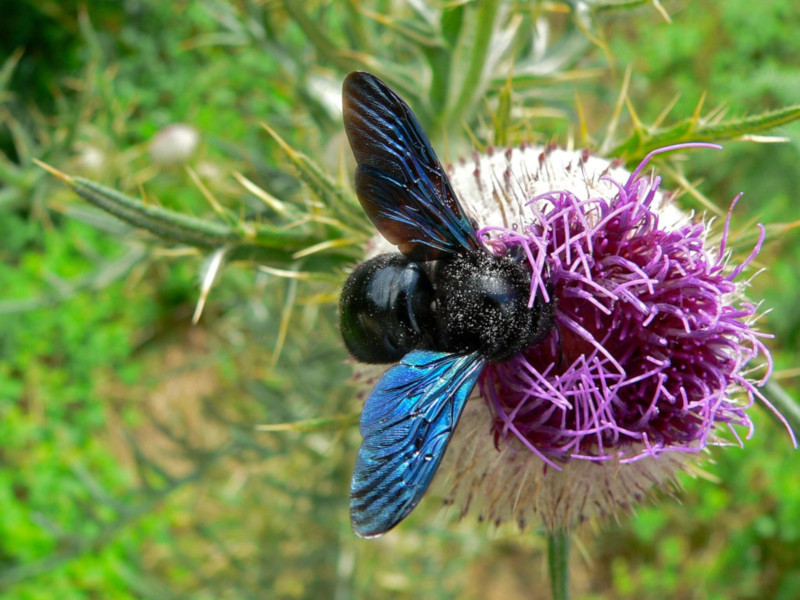
Violet Carpenter Bee Facts
- Notably, the term Violet Carpenter Bee serves as the common name for a particular species of bee that truly stands out visually. However, this fabulous invertebrate also goes by another, hard to pronounce term. That’a its formal scientific name of the Xylocopa violacea.
- Regardless of the name one uses for it, though, the magnificent insect easily merits attention for much more than simply its beauty. Along with its obvious and highly distinctive appearance, this intriguing animal also stands out from related species for its physical size.
- Impressively, the lovely insect also ranks as one of the largest bees found in its part of the world. Thankfully, the work of Nature also holds yet another distinction. That’s the simple fact that the dazzling insect remains extremely docile, and attacks only if directly threatened.
- Quite fortunately, the fabulous Violet Carpenter Bee also stands out from other bees in one more very important manner. In point of fact, unlike many related species located across the globe, its numbers appear to be holding relatively steady, at least for the moment.
- The IUCN, therefore, currently has no listing for the insect on the organization’s published Red List of Threatened Species. Nonetheless, it must be considered to be facing some potential risk, at least. This mainly occurs due to habitat loss and the ongoing effects of climate change.
Related Articles
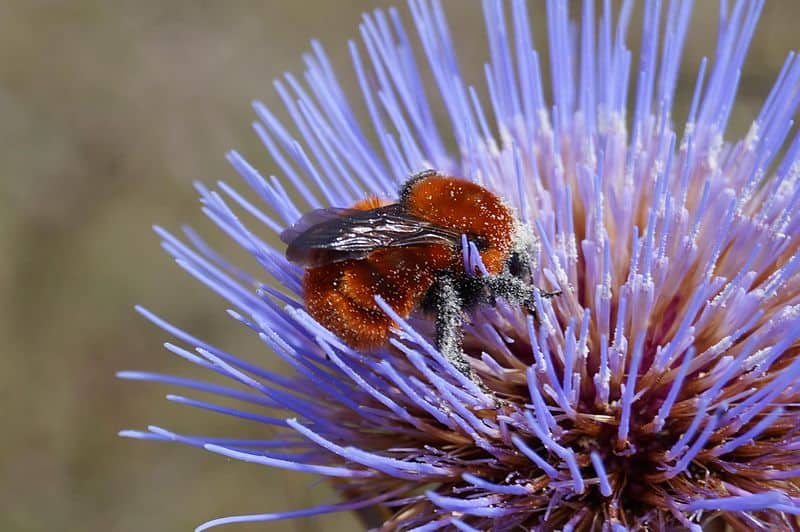
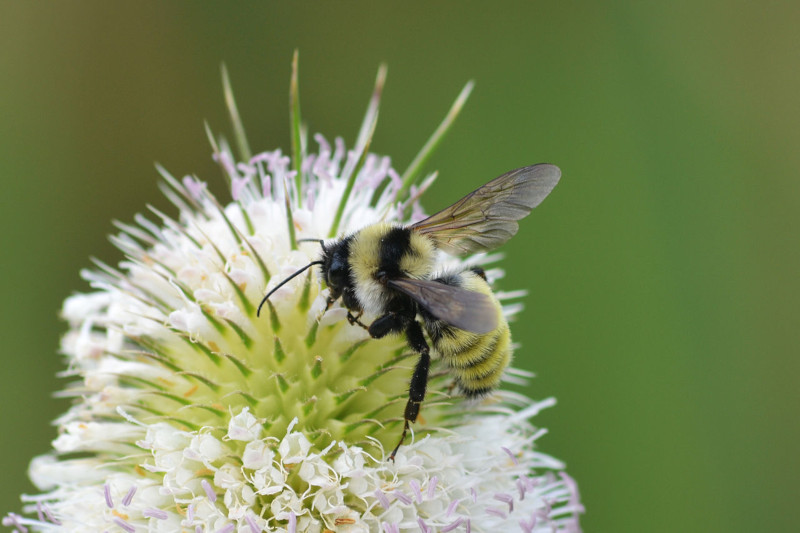
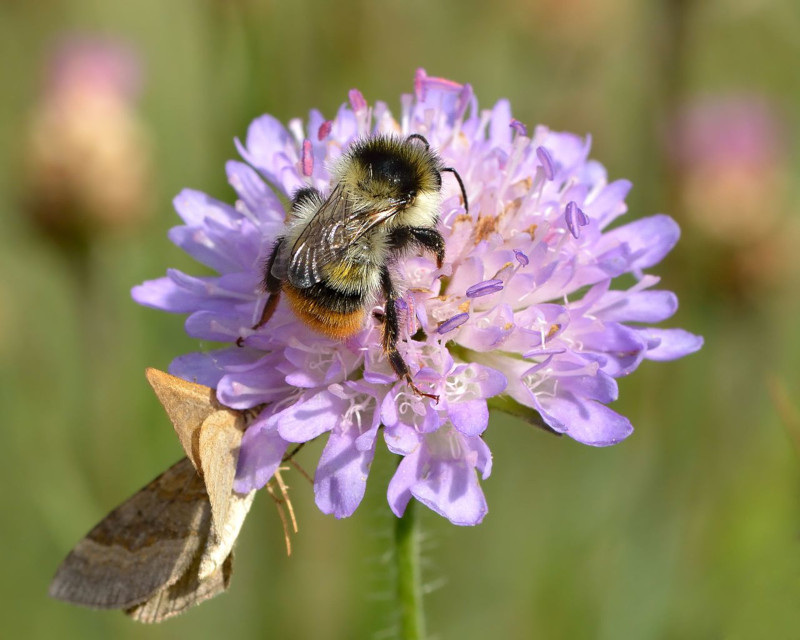
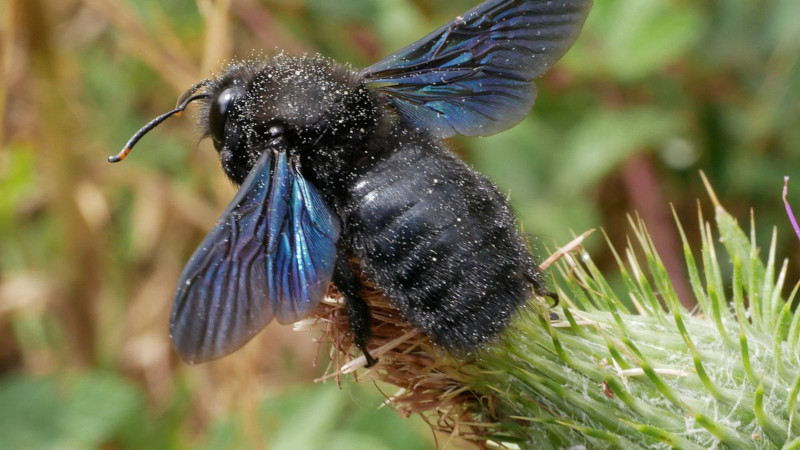
Violet Carpenter Bee Physical Description
The visually magnificent Violet Carpenter Bee unquestionably draws the eye of most fortunate observers, given its incredible appearance. However, this remarkably lovely Arthropod achieves this appeal with somewhat unique methods. It does so with a special combination of color and size.
Like a great many insects, including its numerous related species, the wonder of evolution also displays one more physical attribute of interest. That’s true since the invertebrate displays the physiological trait of sexual dimorphism. This remains a highly common trait throughout Nature.
Not only that, but mature adults of the species, of both genders, attain an average body length that measures approximately 1.2 in (3 cm). That’s a remarkably impressive measurement for a bee. The typical wingspan achieved by both sexes additionally measures approximately 2 in (5 cm).
The bodies of both the males and females also evolved to present the same general body shape. That holds true due to the fact that each of the genders displays a thick, black colored form. The majority of the remarkable body of the bee also appears covered in a layer of small hairs.
The female Violet Carpenter Bee, though, stands out for a particularly notable reason. In this instance, that refers to the fact that she physically distinguishes herself from the male in regards to the presence of a stinger. She evolved to possess one, while the male of the species does not.
It’s the delicate-seeming wings of this beauty themselves, however, that typically garner most of the attention this arthropod receives. That’s true since these sensitive parts of its body usually display an astonishing violet and blue color. Impressively, these also possesses an iridescent quality.
- Kingdom: Animalia
- Phylum: Arthropoda
- Class: Insecta
- Order: Hymenoptera
- Family: Apidae
- Genus: Xylocopa
- Species: X. violacea
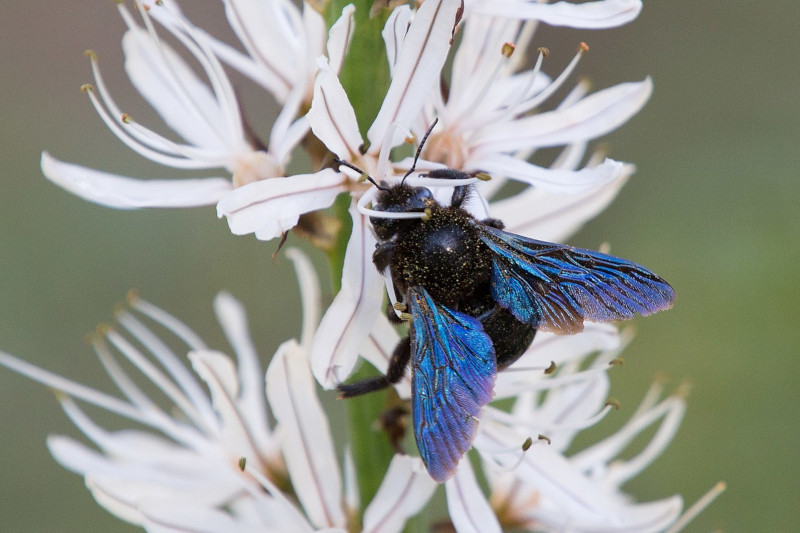
Violet Carpenter Bee Distribution, Habitat, and Ecology
The remarkably stunning member of the Order of Hymenoptera known as the Violet Carpenter Bee impresses researchers in yet another surprising way. That occurs given the fact that the wondrous Arthropod evolved as indigenous to a comparatively broad range of the surface of the earth.
In point of fact, this native zone of habitation covers parts of two entirely separate continents. This represents one more statistic about the creature that distinguishes it. To be more precise, the beautiful invertebrate inhabits portions of both the large continents of Asia and Europe.
Within that expansive range, however, this marvelous and relatively large variety of bee continually demonstrates very specific preferences regarding its choice of habitat. That holds true because this fascinating insect’s most commonly found residing in regions consisting of wooded areas.
Most commonly this habitat choice consists of forests. But, it occasionally even includes such surprising places as public parks. Individuals further inhabit a great range of altitudes. Amazingly, a few scattered individuals have been seen at elevations equaling as much as 5,249 ft ( 1,600 m).
Its lifestyle does remain consistent with the greatest percentage of its known relatives, though. Just like other types of carpenter bee, the Violet Carpenter Bee lives a primarily solitary life. In fact, members of this intriguing species typically only come together for the purpose of mating.
Individuals of both genders bore tunnels into soft wood with their powerful mandibles, thus earning the common name. After completing mating, the female lays her eggs in chambers she constructs. For its dietary needs, both genders feed on pollen and nectar taken from various local flora.
Species Sharing Its Range
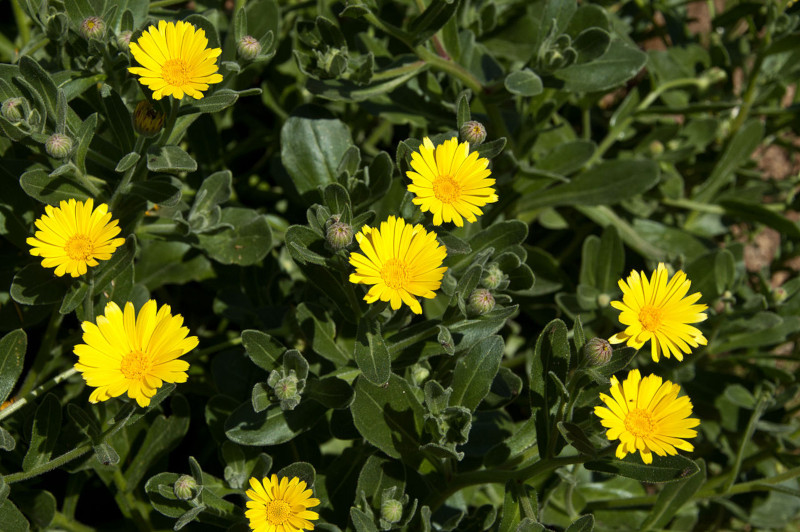
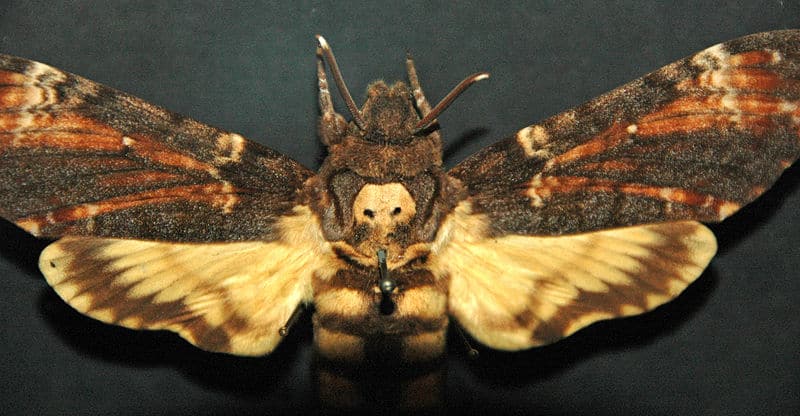

Check out our other articles on 7 Supremely Scintillating Cnidaria, Great Hammerhead Shark, Moeraki Boulders, Queen Alexandra Birdwing, Thorny Dragon, Vietnamese Mossy Frog









Leave a Reply